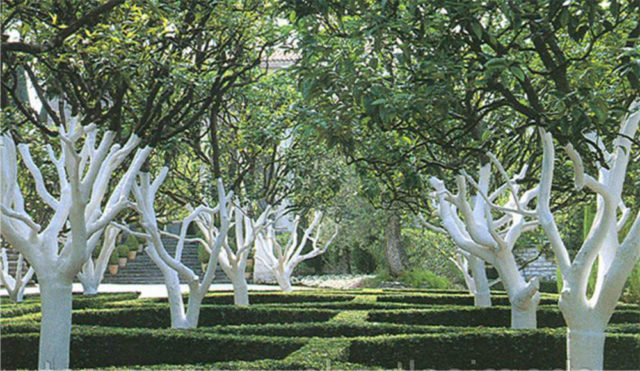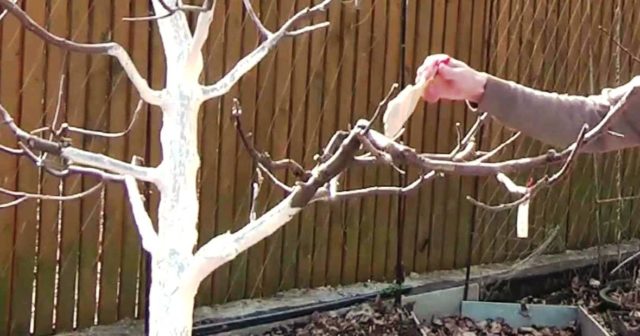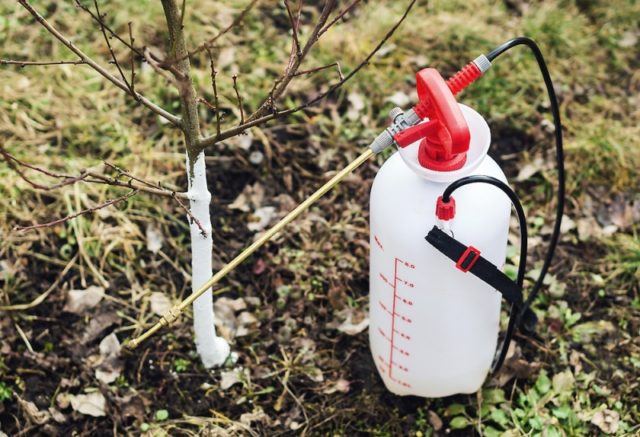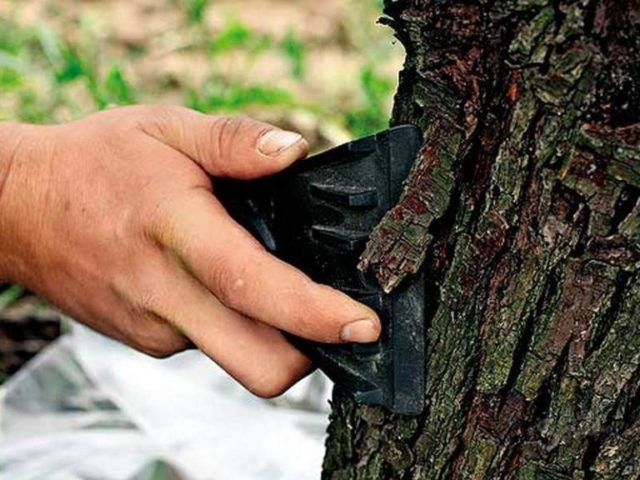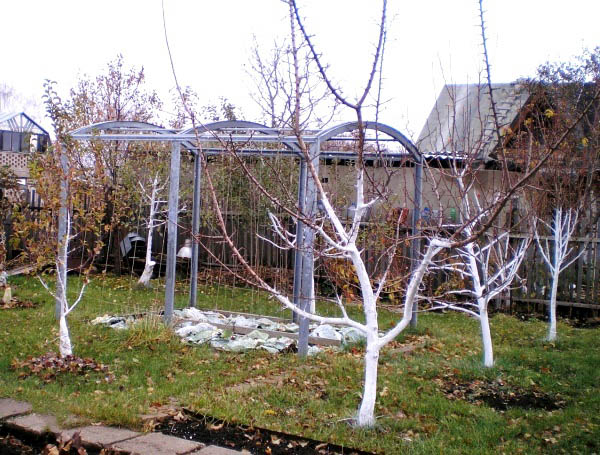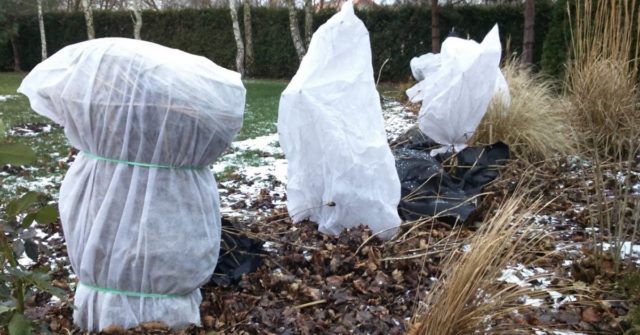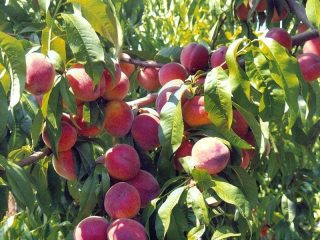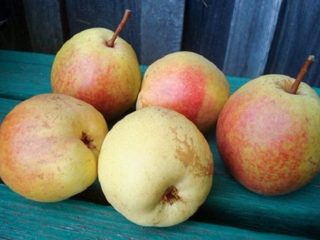Content
Whitewashing the trunks of fruit trees in autumn is the final stage of the pre-winter preparation of the orchard. This procedure is extremely important both from an aesthetic point of view and for plant health in general. After all, it allows you to better prepare trees for winter conditions, as well as to destroy a significant part of the harmfulness of insects and their larvae, using the folds of the bark as a shelter for the winter.
The importance of autumn whitewashing of fruit trees
Whitewashing fruit trees in autumn has several functions:
- decorative;
- protective;
- sanitary.
Whitewashed trees look much more aesthetically pleasing, and a beautiful well-kept garden can become a kind of visiting card of its owner.
In addition, whitewashing protects well from sunburn, and is also a good protection against rodents. The fungicides included in the whitening solutions kill pests and pathogens that winter in the cracks and exfoliation of the tree bark.
When is it better to whitewash fruit trees
Traditionally, most gardeners prefer to whitewash fruit trees twice a season - in early spring, before the buds bloom on the tree, and in late autumn, before the onset of cold weather. Undoubtedly, the most important is the autumn one, which performs much more functions. Spring whitewashing serves only the role of prevention and protection from pests, while autumn, in addition, protects the trunks from sunburn and frost, which is no less important.
The protective effect of whitewashing against temperature changes is manifested in the ability of white to reflect the sun's rays. On a bright sunny day in winter, and especially in early spring, dark tree trunks can heat up to + 20 ° C, while the air temperature remains negative. Particles of adhered snow turn into water, which flows into cracks in the bark. After sunset, the water freezes again, turning into ice, which, increasing in volume, simply tears apart the bark of the tree. Whitewashed trunks practically do not heat up, so there are much fewer cracks on them.
Whitewashing fruit trees in autumn: timing
Since winter comes to different regions of our country at different times, the timing of whitewashing fruit trees in different areas will be different. The optimal time for bleaching is the period after leaf fall, when the temperature settles around zero. In the suburbs and Central Russia, this is the end of October or the beginning of November. In Siberia and the Urals, winter comes earlier, so in these regions it is possible to whitewash fruit trees a little earlier. In the southern regions, you can start whitewashing in mid or even late November.
Autumn whitewashing of fruit trees is one of the last stages of pre-winter preparation of an orchard. For work, it is advisable to choose a dry, sunny day. At the same time, it is worth paying attention to the long-term weather forecast, because if rains are still expected ahead, the applied whitewash can simply be washed off the trunks, and the procedure will have to be repeated.
Preparation of tools and materials
The following tools can be used to whitewash the trunks of fruit trees:
- roller;
- paint brushes;
- buckets;
- spray gun or sprayer (sprayer).
If necessary, you can easily make a homemade brush from a bunch of grass, pieces of synthetic twine or other fibrous material. With this tool, you can easily whitewash several trunks. If the garden is rather large, it is better to use a spray gun.
If whitewash comes into contact with exposed skin or eyes, rinse them with plenty of clean water and, if necessary, go to the hospital.
Whitewash composition for fruit trees
Various materials can be used as whitewash. The most popular ones are as follows:
- Slaked lime solution.
- PVA glue.
- Acrylic paint.
- Water-based (water-dispersion) paint.
- A piece of chalk.
As a rule, a fungicide, for example, copper sulfate, is added to the composition of the whitening solution. All compounds differ from each other in durability, breathability, and cost. The cheapest way to whitewash fruit trees is with slaked lime or chalk, but these are the most fragile materials and are easily washed off by rain.
For whitewashing any mature trees, you can use, for example, the following composition:
- slaked lime - 2.5 kg;
- PVA glue - 0.2 kg;
- copper sulfate - 0.5 kg.
Other whitening compositions are often used, adding clay, manure and other materials as components. To increase the durability and better adhesion of the composition to the bark, instead of wood glue, laundry soap is often used, adding 1 piece, grated to the whitewash, per 10 liters of the composition.
If funds allow, ready-made water-based, water-dispersion or acrylic paints can be used for whitewashing. They are highly durable, but not all are breathable. It is very important that the bark, especially of young trees and seedlings, breathes. Therefore, to whitewash them, it is preferable to use paints intended for facade work, since they allow air to pass through.
Preparation of trunks for whitewashing
Before proceeding with whitewashing, it is necessary to clear the bark of mosses and lichens. To do this, you can use a wooden scraper or a brush with a hard plastic bristle. Iron scrapers and wire brushes cannot be used; they can leave deep wounds in the bark, especially in young trees. This procedure is best carried out in wet weather, cleaning off all excess on a lined oilcloth or plastic wrap.
And you should also remove all young shoots on the trunk of the tree, growing below the first skeletal branches. Cracks and damage must be repaired with a special putty or a mixture of mullein and clay. You can use for this and garden pitch based on natural resins.
After cleaning the barrel, it will be advisable to treat it with a solution of copper sulfate. This is an additional preventive measure that helps against both wintering pests and pathogens of various diseases. To prepare a disinfectant solution, you need to take 100 g of copper sulfate powder and dilute it in 10 liters of water. This mixture needs process a tree trunk before whitewashing, however, most gardeners process not only the stem, but the entire crown.
Whitewashing fruit trees in autumn
The minimum height of whitewashing of fruit trees in autumn is up to the level of the first skeletal branches. In regions with little snow, this is quite enough. However, in climatic regions with a large thickness of the snow cover, the lower skeletal branches are practically at the same level with the snow surface. This can lead to damage by rodents or hares.To avoid this, the height of the whitewash should be increased to about 1.5 m, having processed not only the stem, but also the lower skeletal branches.
Mature trees are usually whitened in two layers. This measure allows you to paint over the entire surface of the trunk with a better quality, ensuring the flow of the whitening composition into all the cracks.
Saplings and young fruit trees less than 5 years old are whitened with an air-permeable solution with a low content of active substance. Older trees are painted, gradually going around the tree in a circle and applying a whitening composition from the very roots to the required height.
Caring for the garden after whitewashing
If the whitewashing is carried out on time, after it all that remains is to carry out work on the shelter for the winter of seedlings and young trees. In addition, a special fence can be installed around them, which will prevent damage to them by rodents or hares. To do this, you can use metal mesh, wooden grates and other materials.
Young trees and seedlings can be covered with spruce branches, bundles of reeds, cardboard boxes or special shelters made of wooden slats and covered with thick paper or burlap. Also, to protect fruit trees from cold and wind, a non-woven covering material can be used, from which a kind of bag is constructed, which is worn on top, and then fixed at the bottom with twine.
Conclusion
Whitewashing the trunks of fruit trees in autumn is not only a way to give the garden a beautiful well-groomed look. It reduces the likelihood of sun and frost damage to tree trunks, and it is also a good way to control pests that winter on the tree. Whitewashing is the most affordable way to prevent diseases and protect the garden, especially in winter.
